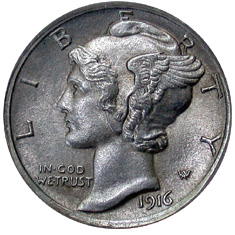 Should the United States Mint produce a palladium bullion coin? A Congressman from Montana, where most domestic palladium mining takes place, thinks so.
Should the United States Mint produce a palladium bullion coin? A Congressman from Montana, where most domestic palladium mining takes place, thinks so.
The bill H.R. 6166 American Eagle Palladium Bullion Coin Act of 2010 was introduced on September 22. The bill had no cosponsors, but has been passed in the House of Representatives without objection. In order for the proposal to become a reality, the bill must be passed in the Senate and then signed into law by the President.
This is not the first attempt for palladium bullion coins. Previous attempts in the House and Senate have included:
- H.R. 5614 Original Saint-Gaudens Double Eagle Ultra High Relief Bullion Act
- Introduced March 13, 2008 by Sen. Max Baucus of Montana
- S. 2924 Original Saint-Gaudens Double Eagle Ultra High Relief Bullion Act
- Introduced March 13, 2008 by Rep. Michael Castle of Delaware. Passed House May 15, 2008
- S. 758 Original Saint Gaudens Double Eagle Ultra High Relief Bullion Act of 2009
- Introduced April 1, 2009 by Sen. Max Buacus of Montana – April 1, 2009
- H.R. 3405 Original Saint Gaudnes Double Eagle Ultra High Relief bullion Act of 2009
- Introduced July 30, 2009 by Rep. Dennis Rehberg of Montana
The latest bill does include some interesting provisions. Although it directs the source of palladium for the coins to be from newly mined domestic sources, if no such palladium is available, it would also allow other available sources to be used. This is an improvement from the laws behind the American Gold and Silver Eagle program.
The Palladium Eagle bullion coins would have a weight of one ounce, fineness of .9995, and face value of $25. The size and thickness of the coins would be left to the Secretary of the Treasury to decide. This is an improvement on the law behind the America the Beautiful 5 oz. Silver Bullion coins, which require a problematic 3 inch diameter.
The Secretary of the Treasury can decide if proof and uncirculated versions of the American Palladium Eagles should be struck. Again, this is an improvement from the lack of direction provided by the law behind American Gold and Silver Eagles.
There are some quirks to the bill, such as the stipulation that the surface treatment of each year’s proof or uncirculated version should differ in some material way from the preceding year. Until now, the US Mint hasn’t done much in the way of striking coins with varying surface treatments.
The bill also states that any US Mint facility other than West Point should strike coins other than the proof version of the Palladium Eagles. In other words, Philadelphia, Denver, or San Francisco would need to strike bullion and uncirculated coins, while West Point could strike proof coins.
Finally, the bill directs the use of designs by Adolph A. Weinman. Specifically the obverse design from the Mercury Dime and the reverse design from the 1907 American Institute of Architects Medal. Both would be rendered in high relief.